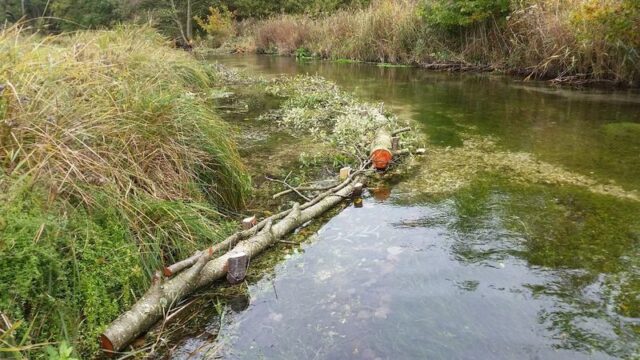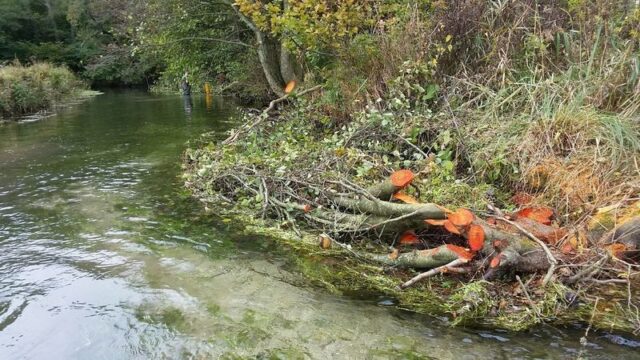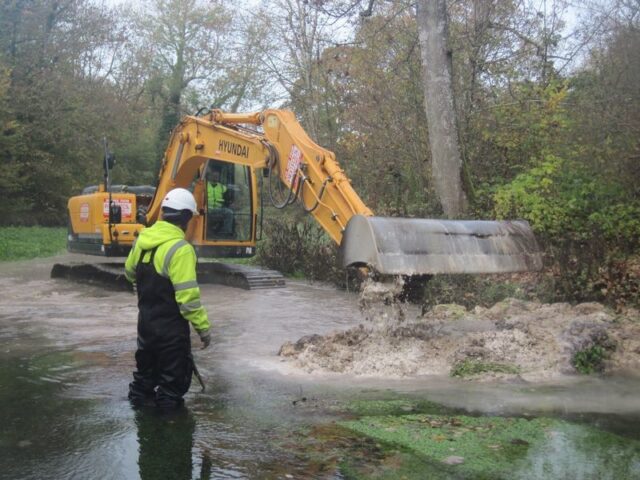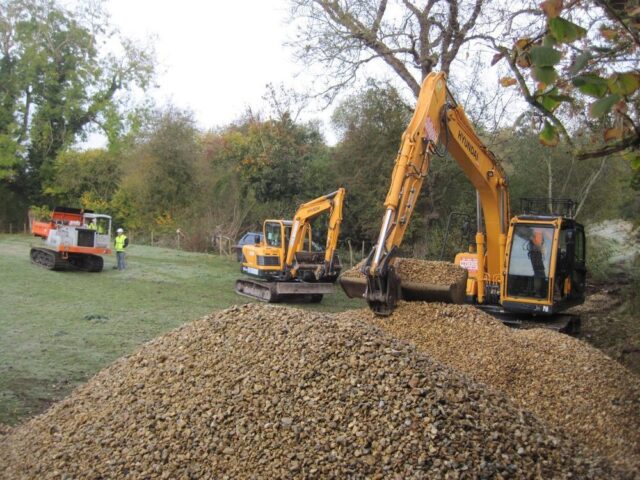Location: 1km of the River Dever, Hampshire, near Bullington.
Issue: Overwide, impounded, shaded, straight and silty channel providing uniform habitat leaving trout and grayling vulnerable to predation and limiting recruitment due to lack of spawning and juvenile habitat.
Objective: Create more diverse habitat with variations in depth, flow velocity, light and shade.
Method: Pools and riffles created with heavy machinery, including gravel introduction to create spawning riffles. Impoundment removed. Bankside tree work to increase light in the channel. Brushwood berms, flow deflectors, hinged trees, cover logs. Bank lowering and re-profiling.
Budget: £20,000.
WTT role: Lead partner — project design and delivery.
Partners: Landowner, Environment Agency, Fishing Breaks (fishing lessee), Springwise / 1% for the Planet.
Project date and duration: Autumn 2016, 10 days.



